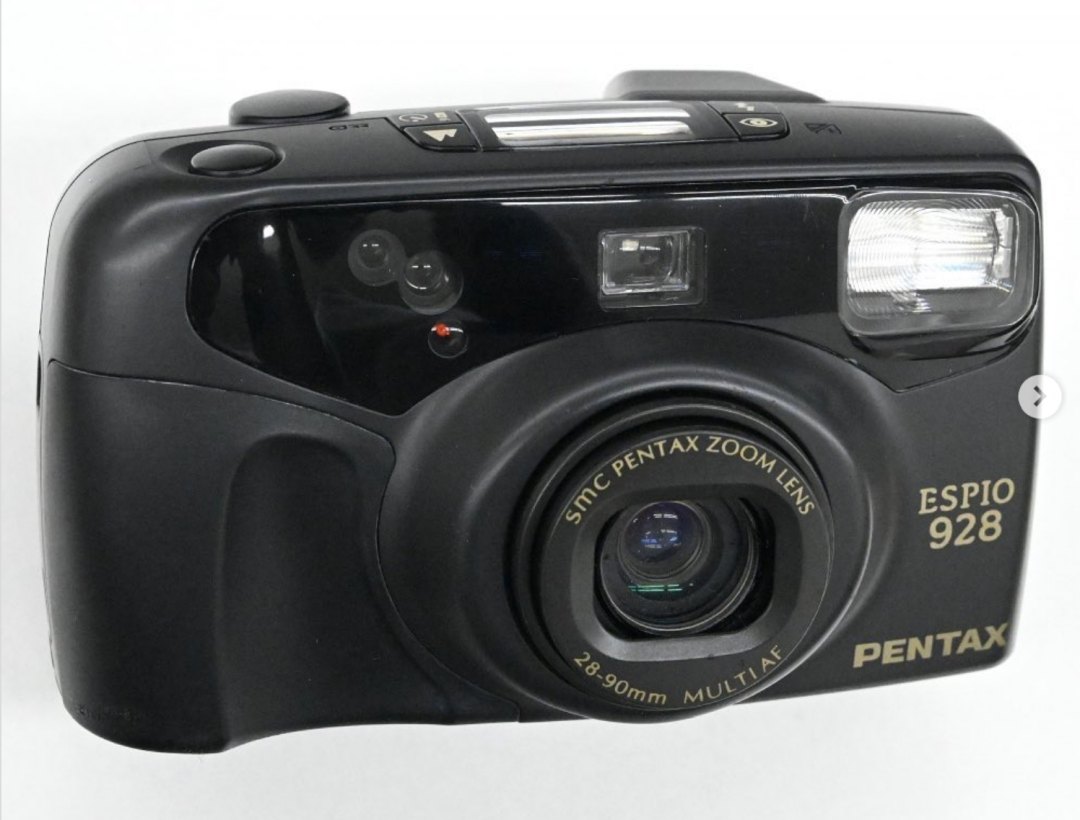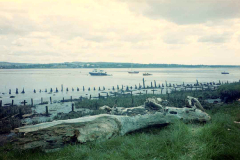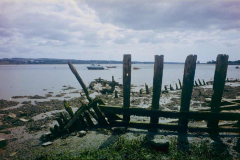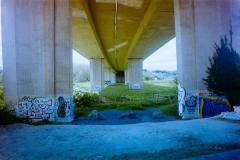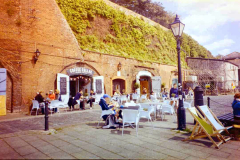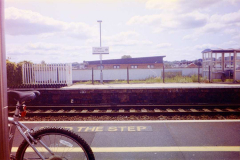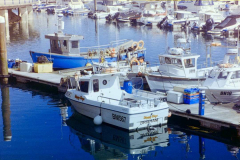I’m a sucker for good film gear and the Pentax Espio 928 is a cracker!
Before I tell you why I thnk that the Pentax Espio 928 is a cracker, I want to talk about the particular problems I have found with film. Basically this is, one camera, one film. Until you’ve shot to the end of the roll, you can’t move on to another roll so you are somewhat stumped.
The solution of course is easy. Either you have to treat film like digital and just blast through as many rolls as you can, or, you need to have a small arsenal of film cameras on hand all loaded with film and ready to shoot. The former approach is, well, somewhat pointless as you might as well shoot digital if you are going to blast your way through countless rolls of film whereas the latter approach is doable albeit there’s a cost penalty.
The cheapest approach seems to me be to buy fully manual SLR’s as you can pick these up for just a few pounds complete with lens. Examples would be cameras like my Pentax KM and Nikon FM, both good manual cameras with no real bells and whistles. For a few pounds more you could focus (excuse the pun) on say the Pentax K1000 or ME Super or perhaps look at something like the Nikon FE. There are literally thousands of models you could choose from. The benefit of this approach is that you are buying semi-professional gear which requires some input from you to achieve the best results.
Another approach is to buy good but relatively low end Point & Shoot cameras like the Canon Sure Shot, Pentax Espio, Olympus XA, Trip 35, RC & RD etc. I mean there are dozens of brands to choose from and within these brands, hundreds of variants. Prices here can vary enormously but you can pick up a highly rated Point & Shoot camera for as little as £30 – £40 and something a little better for less than £100. The choice is huge!
My approach has been to go down the second route albeit I am trying to keep an open mind when it comes to the type of gear I buy. After all I already have the Pentax KM, the Nikon FM, the Olympus XB41 AF, the Nikon F801 so I am reasonably well covered. However I am a sucker for Point & Shoot cameras and while the Olympus XB41 AF is really good, it’s not the best lens and it is a fixed focal length. It is also very limited in terms of shutter speeds and the ISO of the films it can choot with. As a point and shoot camera, it really is as simple as you can get!
So, having researched the hell out of Point & Shoot cameras I finally opted for another Olympus, this time the Olympus Espio 928. I just think that Pentax / Ricoh lens technology is as good as anything out there especially at this price point and from this period of time plus the Espio 928 offers a really useful 28-90mm zoom range in an ultra-lightweight body. Perfect for carting around on a bike or for when you’re on the move.
It’s also got an f3.5 apperture at the wide end which is excellent for a camera at this price point. Sure that drops off as you head towards 90mm but my guess is you aren’t going to notice any significant disadvantages to performance at the long end. It’s all very exciting really, I can’t wait to see how it performs out in the real world.
As luck would have it, the Espio 928 actually arrived a few days ago, just in time for my bike ride along the river Exe which will be its first major outing. Shots from the day will no doubt feature lots of water and boats as well as the odd lock or two. We also intend to meander into the quayside in Exeter so there will hopefully be a few good shooting opportunities in a semi-urban area too. Primarily I am interested in finding out about the Espio 928’s abilities when subjected to various shooting conditions, in particular it’s ability to handle landscapes through to closer up portraits.
Now, buying secondhand gear is fraught with potential problems and lots of cameras come with disclaimers like “not tested, may or may not work, returns not accepted” which makes buying on-line somewhat hazardous. The camera I chose looked great in the photos and had been tested for general functionality but not film tested. I thnk the exact words used were “working”. The price though was good, I got it for £25 plus UK shipping so for under £30 GBP and importantly the seller would accept returns which is always a good sign.
1st Impressions of the Pentax Espio 928
Well, this Espio 928 is like new. And I mean like new. I showed it to a friend today and he thought it was brand new. What can I say.
The exterior is mark free, the internals are super clean as is the lens and viewfinder – no dust anywhere as far as I can see. The shutter again appears in perfect condition. I popped in a CR123 battery, loaded in some old expired Kodak ColorPlus 200 from the fridge and everything started up exactly as you would have hoped for.
The zoom worked as expected too, not the quietest but various reviews had mentioned this so no suprises there. A couple of quick test shots to check film wind on and it’s ready for it’s first outing tomorrow. I’ll pocket a roll of Fujifilm Xtra 400 too just in case I burn through the 24 shots of Kodak Gold a little too quickly. I might also take along my Pentax XB41 AF as a backup as that’s currently loaded with Fujifilm Xtra 400 too. The two cameras weigh nothing and you can never tell what you might encounter.
The Pentax Espio 928 in use
Well, the stuff I have been reading didn’t lie. This is a great Point & Shoot camera of its time. It’s not small, I knew that from reading various articles, but it’s not huge either. It’s definately light so you really don’t notice that you are carrying it. Most of the time it was slung aroud my neck and to be honest, I didn’t really notice it.
It’s certainly not quite, but again, I knew that. The 28-90mm focal range is just enough but even though it’s somewhat of a limited range, moving between the two focal extremes does take some time and there is a noticeable whirring as it does it. This is not a covert camera by any means.
All in all I am hugely impressed. Not only that a camera some 30 years old could have lain around untouched it seems by human hands for pretty much all of that time, but also in its ability to do a particular job and to do it so well.
Photo’s from the expedition
Normally if I was shooting with a digital camera, and indeed I did take a few shots with the Canon G7x mkII I had sneaked along, I would have probably banged off a hundered or so images. However, the Espio 928 has slowed me way down and I only shot 17 photos during the whole day. I took another 5 photos to finish off the roll when out with friends back here in Torquay.
Here are the developed photos.
The film was Kodak ColorPlus 200 as mentioned earlier. This expired in 2012 so I’m shooting film some 11 years outside of its best. Shooting with expired film shouldn’t put you off though, it’s somewhat of a crap-shoot but the results can be amazing and well worth the effort. This film seems to have a strong bias towards blue.
I processed the film using standard C-41 chemistry. All the images were digitised using my Nikon D600 with the Tamron 90mm f2.8 1:1 Macro lens. Processing of the digital images was done using Luminar Neo as I find this is the quickest and easiest method. Only basic processing done, just realignment of the 3 colour channels ie red, green and blue and some basic control over blacks and whites. Some images were passed through Affnity Photo 2.0.1 to balance colours, WB etc using the Filters > Colours tools. This made very little difference in most cases so I’m happy with the results overall.
All photos are optimised for viewing on a device such as a PC so some degradation is to be expected in image IQ.
Other Posts you might like
If you enjoyed this article “the Pentax Espio 928 is a cracker” then there are a number of posts on this website talking about film processing and editing so have a wander around if this interests you. Here’s a few you might like:
- 5 Good Reasons Why You Shouldn’t Shoot Film
- Cheap Photography on a Budget
- Digitising Film | Natural window backlight vs Huawei P20 Pro Backlight
- Digitising Film | The final solution – almost!
- Part 1: Digitising film with an office scanner
- Part 2: Digitising film with a camera setup!
- 35mm Film Resurgence?
